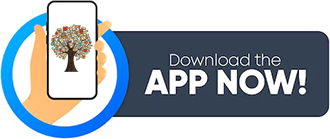Patterns of Social Inequality and Exclusion
Short Questions with answers
1. What is social inequality?
Answer : Social inequality means unequal access to resources, opportunities, and power.
2. What is social exclusion?
Answer : Social exclusion is when individuals or groups are kept out of society’s benefits.
3. What are the three forms of capital?
Answer : They are economic capital, cultural capital, and social capital.
4. What is prejudice?
Answer : Prejudice is a pre-judged opinion about others without evidence.
5. What is a stereotype?
Answer : A stereotype is a fixed belief about a group, ignoring individual differences.
6. What is discrimination?
Answer : Discrimination is unfair treatment of individuals based on group identity.
7. What is untouchability?
Answer : Untouchability refers to social exclusion based on caste hierarchy in India.
8. What are Dalits?
Answer : Dalits are historically oppressed castes subjected to untouchability.
9. What does the term ‘Adivasi’ mean?
Answer : It means “original inhabitants” and refers to tribal communities in India.
10. What is the caste system?
Answer : It is a hierarchical system that assigns social status based on birth.
11. What are Scheduled Castes?
Answer : They are groups recognized by the Constitution for special protection due to past discrimination.
12. What is gender inequality?
Answer : It is unequal treatment or opportunities based on gender.
13. Who was Raja Rammohun Roy?
Answer : He was a social reformer who campaigned against practices like sati.
14. What is the Mandal Commission?
Answer : It identified and recommended support for Other Backward Classes (OBCs).
15. What is disability?
Answer : Disability is when physical or mental impairments interact with societal barriers.
16. What does OBC stand for?
Answer : OBC stands for Other Backward Classes.
17. What is social stratification?
Answer : It is the ranking of groups in a society based on access to resources.
18. What is the meaning of ‘Harijan’?
Answer : It means “children of God,” a term used by Gandhi for Dalits.
19.What are the main causes of social exclusion?
Answer : They include caste, gender, religion, and disability.
20. What is the ‘93rd Amendment’?
Answer : It introduced reservations for OBCs in higher education.
21. What is ‘distance pollution’?
Answer : It is the belief that even the shadow of an untouchable can cause impurity.
22. What is a gender stereotype?
Answer : It is a fixed idea about roles or traits based on gender.
23. What is a third gender?
Answer : Third gender refers to people who are neither exclusively male nor female.
24. What does the Constitution say about untouchability?
Answer : Article 17 of the Constitution abolished untouchability.
25. What is the role of education in reducing inequality?
Answer : Education can provide equal opportunities for all groups.
26. What is the main challenge for Adivasis today?
Answer : Loss of land and displacement due to development projects.
27. What is the significance of the term Dalit?
Answer : It signifies political awareness and resistance against oppression.
28. Who wrote Sultana’s Dream?
Answer : It was written by Begum Rokeya Sakhawat Hossain.
29. What is the Scheduled Tribes (Prevention of Atrocities) Act?
Answer : It punishes discrimination and violence against Dalits and Adivasis.
30. What is the main issue for disabled people in society?
Answer : Society’s design and attitudes create barriers for them.
Medium Questions with answers
1. What are the features of social inequality?
Answer : Social inequality means some groups have more resources, education, and power. It is systematic and linked to cultural, economic, and social factors. It often passes from one generation to another.
2. What is the relationship between caste and occupation?
Answer : Traditionally, caste decided occupation, with little mobility between castes. Though the connection is weaker today, caste still influences job opportunities. Privileged castes dominate high-status jobs, while lower castes face restrictions.
3. How does prejudice affect society?
Answer : Prejudice leads to negative opinions about groups without knowing them. It is based on stereotypes and is resistant to change, even with evidence. This often results in exclusion or discrimination against certain groups.
4. What is the role of stereotypes in discrimination?
Answer : Stereotypes create fixed ideas about groups, ignoring individual traits. They simplify complex communities into single traits, like labeling all members as lazy or cunning. These ideas fuel prejudice and justify discriminatory behavior.
5. What are the struggles of Adivasis?
Answer : Adivasis face land loss, displacement, and poverty due to government and private projects. Forest policies and industrial development have worsened their situation. Despite challenges, they have fought for rights and statehood, like in Jharkhand.
6. What is the history of Dalit movements in India?
Answer : Dalit movements began as resistance against untouchability and caste oppression. Leaders like Ambedkar and Jyotiba Phule advocated for rights and dignity. Today, Dalit political and cultural movements continue to fight for equality.
7. How does gender inequality affect women?
Answer : Women often lack access to education, property, and decision-making roles. Historical practices, like child marriage and dowry, limit their rights. However, movements and reforms have improved their status in some areas.
8. What does the term ‘social exclusion’ mean?
Answer : Social exclusion happens when groups are denied access to education, health, and jobs. It is systematic and affects marginalized groups like Dalits, Adivasis, and women. Exclusion prevents people from living fully in society.
9. What are the policies to address caste inequality?
Answer : Policies include reservations in education, jobs, and legislatures for Scheduled Castes and Tribes. Anti-discrimination laws, like the Prevention of Atrocities Act, protect against violence. These efforts aim to reduce caste-based disadvantages.
10. How are OBCs different from Dalits?
Answer : OBCs are socially and educationally disadvantaged but do not face untouchability. They often have better social and economic status than Dalits. However, lower OBCs face conditions similar to Dalits, especially in urban areas.

Leave a Reply